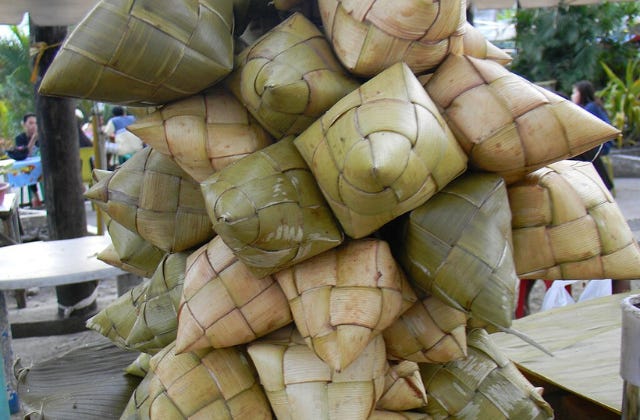Cebu’s Kawasan Waterfalls and its torquoise waters
Growing up, Christmas indisputably became my favorite time of the year because of Santa Claus.
My earliest memories were of me and my sister excited to get up in the morning and discover what Christmas goodies Santa had placed inside the socks we had put up near the window.
I was thoroughly enthralled about the idea of him sneaking into children's rooms while we slept , and escaping with nary a hint of his presence.
As I grew up, I later learned of course that Santa was my parents. I was a bit disappointed but as a kid, I later realized that it wasn't all about Santa, but rather it was about the spirt of giving that pervades the Christmas season.
BELIEFS
Just like most places in the Philippines, the Christmas season in Cebu is tethered to our Catholic beliefs and traditions. Foremost is the Simbang Gabi - believed to grant all wishes- if all 9 masses are attended without fail.
A focal spot for Cebuanos during Christmas is the lighting of the Christmas Tree of Hope at the Fuente Osmena Circle which draws visitors to its dazzling lights and décor, enhancing the Christmas mood.
UNIQUE
Christmas in Cebu is unique because of myriad factors. First are the geographic nuances. Beaches are less than an hour away and so its commonplace for Cebuanos to sojourn to beach resorts for Christmas events and parties.
The pandemic also ushered in the rise of mountain resorts here in Cebu and so you might find a lot of families leaving their homes for colder spots just outside the Metropolis.
Another distinctive feature of Christmas in Cebu is that the festivities extend all the way up to the Sinulog Festival held during the 3rd Sunday of January. So if you think the Philippines has the longest Christmas season in the world, Cebu has the longest Christmas season among all places in the Philippines, bar none.
And then of course, there's the food. As Cebuanos pride themsleves in having the best lechon in the country, this spit-roasted delight is the usual centerpiece in every Christmas gathering for noche buena or Christmas dinner.
Another unique feature of the Cebuano cuisine is the “puso”( white rice in a heart-shaped casing) hence, the name “puso” or heart, which goes together with lechon like coffee and donuts in Western culture.
Here in Cebu the sudden rise in demand for lechon during Christmas obviously ushers in volume orders for “puso”. The makers of “puso” here congregate around Barangays Pasil and Suba.
Cebuanos grow up eating “puso” and so were also quite familiar about its origins. Weavers use coconut fronds and usually younger coconut leaves are preferred since they are malleable and these have to be separated from the coconut midribs.
The famous puso
The weaving pattern has to be precise so that grains of rice do not fall out when they are cooked.
And finally, there is the music. Another known Cebuano trait is music artistry and Cebuano guitars are also world-famous. Traipse around town and you will see the usual videoke sessions, but in Cebu more than any other place in the Philippines, you will still encounter people singing to acoustic guitars, belting out melancholic songs to match their holiday spirit.
So if ever you find yourself spending Christmas in the Philippines, Cebu should arguably be in your itinerary.






